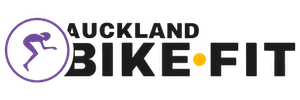There are lots of people out there performing bike fits in one form or another, unfortunately a lot of the fits i wouldn’t personally call a bike fit, more of a basic adjustment or the cycling equivalent of a Mcdonalds fast food meal.
I have compiled a top 10 of things to look for when looking for a fitter. There are some good knowledgeable fitters out there. Its important also that the fitters are up to date with all the modern tech know how – bikes are changing and so are fitting techniques.
Craig Baldwins top 10 things to look for in a bike fit.
#1 Definitely don’t go for the cheapest priced fit, in the service industry time = money so if you have an $80 bikefit you are going to get $80 value for money.
#2 Do your research on the fitter not the shop that your booking in with. Google is a very helpful tool, google your fitters name and check out his credentials. Ask around your cycling buddies and see who helped them.
An experienced master fitter will have a minimum of 300 – 400 fits under his belt. A fitter with this kind of experience will have seen and had the opportunity to fix the majority of bike fit related issues, as with any job you never stop learning so experience is the key. I hate to say it but there are so many gung ho fitters out there that fit everybody the same way using the same methods – not a good practice when you want results. Bike fitting is a science and every human body is different.
#3 Modern dynamic measuring tools i.e not the plump bob or geomeometer. although these methods were the favorite back in the day it is now 2016 and we have software that enables us to check all these measurements digitally and more importantly dynamically (when you are actually riding and not at a stand still)
Why do we need software? Why does an astronomer need a telescope? For more accurate results, the human eye is accurate to roughly 7 degrees – not bad but not good, its actually the equivalent of a football field in bike fit terms. Software allows us to get this tolerance down to i 1-2 degrees.
#4 Video analysis/motion capture – the human eye cannot work within the accuracy range needed to fine tune a fit, at best the human eye can work within 7-8 degrees of an angle and this is the problem. Video software or motion capture enables you to place real time body angles on to the client as they are riding. we have up to 75% more accuracy over your standard “eye ball” bike fit.
#5 Look for a full 360 fit – Side on measurements are what people think of when having a bike fit and i think most people out there have experienced the 15 minute “that looks about right” fit. When performing a bike fit we should look at everything both sides ,front and back. one of the most overlooked areas in a bike fit are the feet. Your feet are the main contact point on the bike and over 86% of the worlds population have some kind of pronation, pronation will effect your alignment which in turn will effect your power and comfort.
#6 Size cycle – The size cycle is a fully adjustable bicycle that allows the fitter to accurately find the riders optimal cycling position. If you have a bike that is a bit small or a bit too big then it will be pretty impossible to know where we need to end up, basically lots of guess work. With the size cycle we can find our desired end result and then adjust the existing bike ask close as we possibly can.
#7 Make sure your fitter actually records and stores your finished bike measurements. The last thing you want after spending hours perfecting your position is to have something move and not know where it needs to go back to. If in doubt just ask at the time of booking, it will save you a lot of frustration
#8 Look for a fitter with a dedicated space or studio away from the main area of the shop. It can be a little awkward trying to have a fit when you are slap bang on display in the middle of a busy sales floor, not ideal and definitely not professional.
#9 When looking for a new bike try to use a fitter that is not brand bias or affiliated with one or two bike brands, get an outside opinion from a good fitter to see if the bike you are looking for will even fit your body, you can then make your purchase full of confidence.
#10 Patience – sometimes certain issues take time to fix so a good fitter will realise this and generally book you in for what is known as a follow up appointment. Follow ups are needed to tweak your position over time due to injury, changes in flexibility etc. Check when booking that this is a service that is offered.






